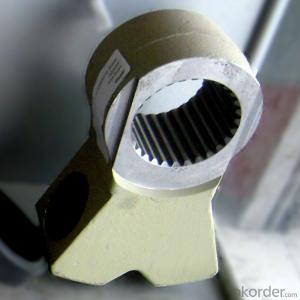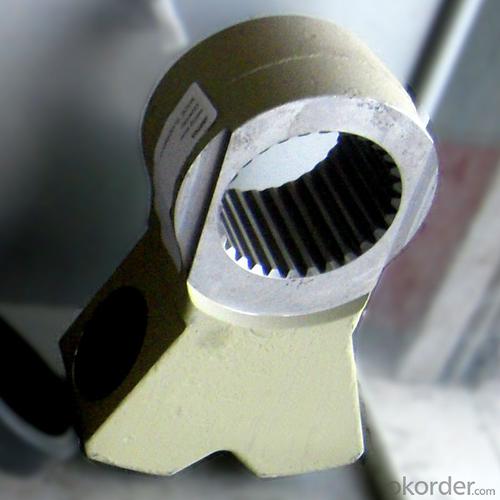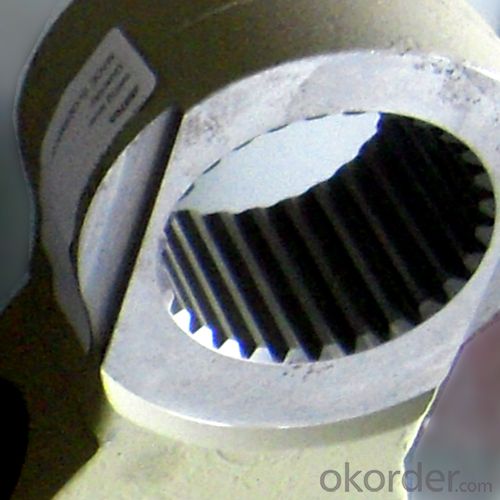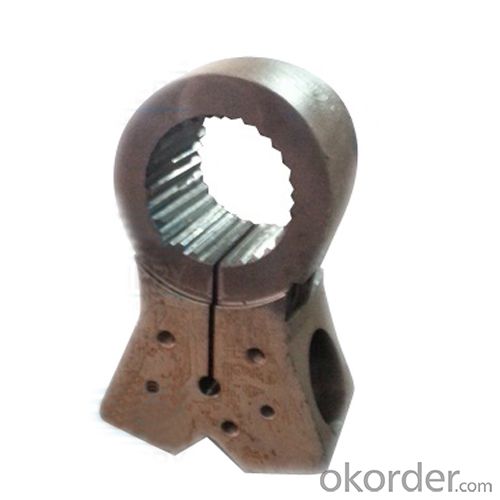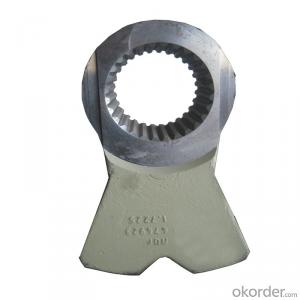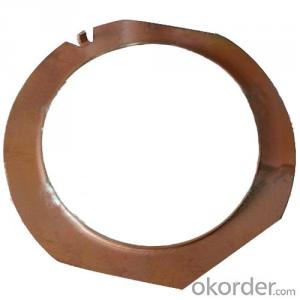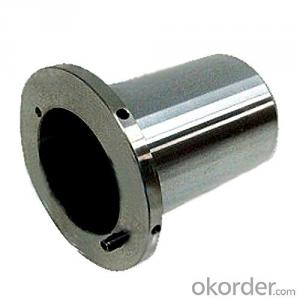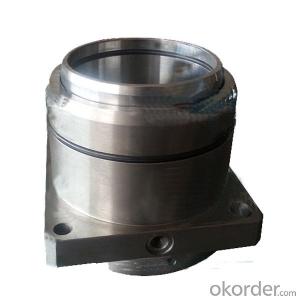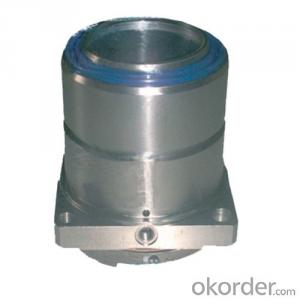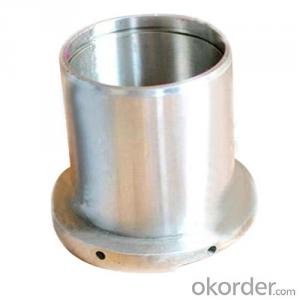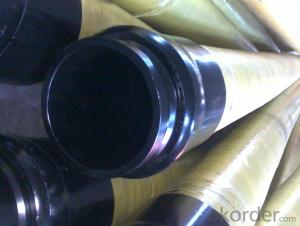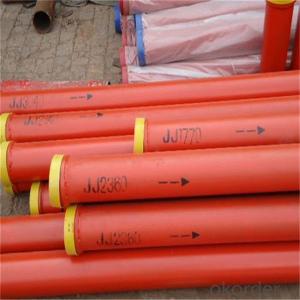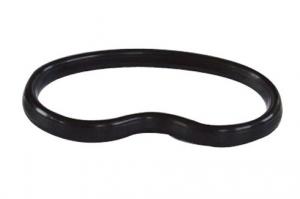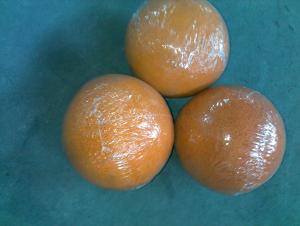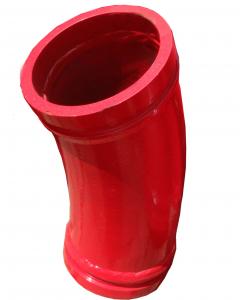Concrete Pumps Spare Parts Slewing Lever Q90
- Loading Port:
- Tianjin
- Payment Terms:
- TT OR LC
- Min Order Qty:
- 1 pc
- Supply Capability:
- 1000 pc/month
OKorder Service Pledge
OKorder Financial Service
You Might Also Like
Product Description:
The Concrete Pumps Spare Parts Slewing Lever Q90 normally made by steel material No.ST52, 20#, 37MN5, Q235B according to customer’s requests, and also package in plywood box and put into container.
Scope of Application of the pipes
The Concrete Pumps Spare Parts Slewing Lever Q90 is a concrete pumps parts for combined use with other concrete parts in for concrete pumps and truck pumps. It can be widely used in the construction of various types of concrete structures like industrial and civil buildings, bridges, roads, and other types of infrastructure.
This pipes can only be used in concrete construction operations, but not in any other operations, like dragging, moving, or hoisting heavy articles or personnel. The pipe is also not allowed to be used in any location where any combustible or explosive material exists or a cave-in may occur.
Product Advantages:
OKorder's Concrete Pumps Spare Parts Slewing Lever Q90 Channels are durable, strong, and safety.
Main Product Features:
· Premium quality
· Prompt delivery & seaworthy packing (5-10 days)
Reliable performance
Easy to weld
High safety.
· Professional Service
· Competitive pricing
Measuring of wall thickness from the outside
Low purchase cost
Specifications:
CNBM No. | 2080014 |
Original No. | 274877001 |
Description | Slewing Lever Q90 |
Remark |
FAQ:
Q1: How long about delivery time Concrete Pumps Spare Parts Slewing Lever Q90 ?
A1: Normally we keep the raw materials for old customers and sometime we also keep stock products to make sure delivery time in any emergency cases.
Q2: How do we guarantee the quality of our Concrete Pumps Spare Parts Slewing Lever Q90 ?
A2: We have established an advanced quality management system which conducts strict quality tests at every step, from raw materials to the final product. At the same time, we provide extensive follow-up service assurances as required.
Q3: How soon can we receive the product after purchase?
A3: Within three days of placing an order, we will book the vessel for goods. The specific shipping date is dependent upon international and government factors, but is typically 7 to 30 workdays.
Q4: If we can produce some Slewing Lever according to customers request?
A4: Yes, we can produce Slewing Lever Q90 according to the difference country situations to make it suitable to the market and customers. We have very professional technical team to make the design.
Q5: How to make a quick resolution for after service?
A5: OKorder and our manufacture both have overseas branches all-around of world.
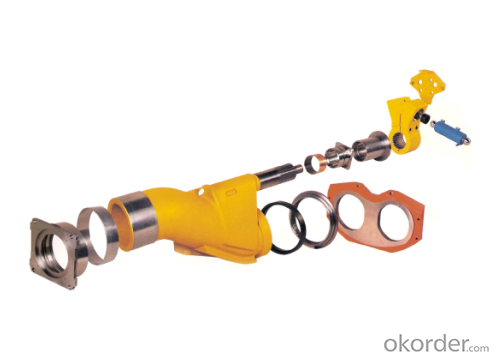
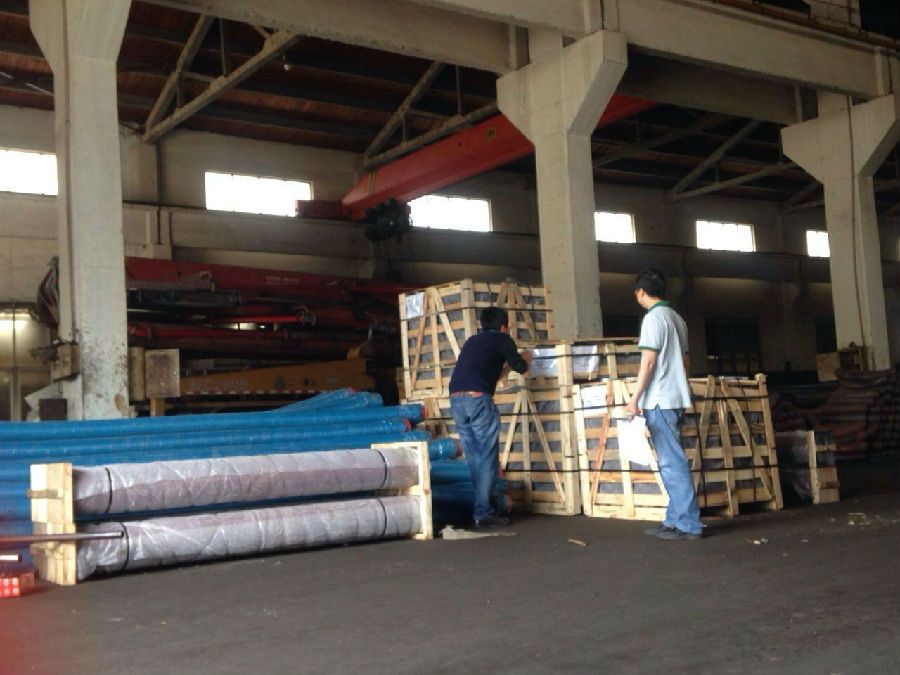
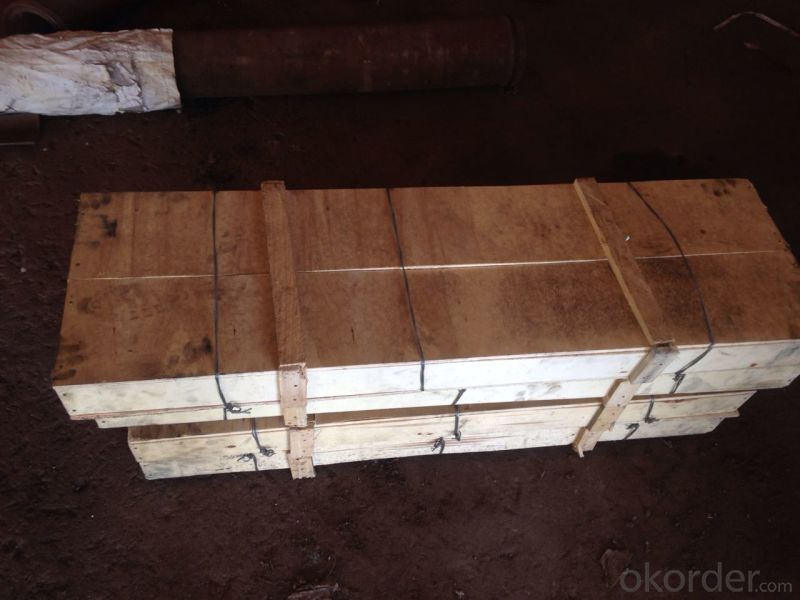
- Q: Are there any specific guidelines for the installation of hopper components or agitators in concrete pump spare parts?
- Yes, there are specific guidelines for the installation of hopper components or agitators in concrete pump spare parts. These guidelines typically include instructions on proper alignment, securing of bolts, lubrication, and ensuring all components are properly connected. It is important to follow these guidelines to ensure safe and efficient operation of the concrete pump.
- Q: What are the indications of a faulty concrete pump seal?
- There are various signs that may suggest a defective seal in a concrete pump. Some commonly observed indications are: 1. Leakage: A clear sign of a faulty seal is the presence of leaks in the seal area. If you notice any leaks, it indicates that the seal is not functioning properly and should be replaced. 2. Decreased pumping efficiency: A defective seal can result in reduced pumping efficiency. If you observe that the concrete pump is unable to deliver the same quantity of concrete as before, or if the job takes longer to complete, it could be due to a faulty seal. 3. Heightened noise levels: Another indication of a faulty seal is an increase in noise levels during operation. If you notice any unusual or louder noises emanating from the concrete pump, it may be an indication that the seal is not sealing properly and requires inspection. 4. Vibrations or movement: Faulty seals can also cause excessive vibrations or movement in the pump. If you notice that the pump is vibrating more than usual or if it moves around during operation, it could signify a problem with the seal. 5. Contamination: A defective seal can allow contaminants like dirt, dust, or water to enter the pump. If you observe any signs of contamination in the pump, it is important to inspect the seal and replace it if needed. Promptly addressing any indications of a defective concrete pump seal is crucial to prevent further damage to the pump and ensure safe and efficient operation. Regular maintenance and inspection of the seal can help in avoiding potential issues and prolonging the lifespan of the concrete pump.
- Q: How often should hydraulic accumulator bladders be inspected or replaced in a concrete pump?
- Regular inspections of hydraulic accumulator bladders in a concrete pump are essential to ensure their good condition and proper functioning. Ideally, these inspections should be conducted on a monthly basis. However, the frequency of inspection may vary depending on the specific operating conditions of the concrete pump. During the inspection, it is important to carefully examine the bladders for any signs of wear, damage, or leakage. If any of these issues are detected, immediate replacement of the bladders is recommended. This will prevent further damage to the hydraulic system and maintain the overall efficiency and safety of the concrete pump. In addition to regular inspections, it is crucial to adhere to the manufacturer's guidelines regarding the replacement interval for hydraulic accumulator bladders. The manufacturer usually specifies this interval, taking into account factors such as the type of accumulator and the working conditions of the concrete pump. Ultimately, the objective is to ensure that the hydraulic accumulator bladders are in optimal condition to uphold the performance and reliability of the concrete pump. Therefore, conducting regular inspections and promptly replacing bladders are vital for the safe and efficient operation of the concrete pump.
- Q: How often should hopper agitator shafts be inspected or replaced in a concrete pump?
- Hopper agitator shafts in a concrete pump should be inspected regularly, ideally during routine maintenance checks, to ensure they are in proper working condition. The frequency of inspections may vary depending on the usage and operating conditions of the concrete pump. However, a general recommendation would be to inspect or replace hopper agitator shafts at least once every 6 to 12 months to prevent any potential issues or malfunctions.
- Q: What are the safety measures to consider while replacing concrete pump spare parts?
- When replacing concrete pump spare parts, there are several safety measures that should be considered to ensure the safety of the workers and the overall success of the replacement process. 1. Lockout/Tagout: Before starting any maintenance or replacement work, it is crucial to follow proper lockout/tagout procedures. This involves isolating the equipment from its power source and placing lockout devices to prevent accidental startup. This ensures that the equipment cannot be operated while replacement work is being carried out. 2. Personal Protective Equipment (PPE): Workers involved in the replacement process should wear appropriate PPE such as safety goggles, gloves, hard hats, and steel-toed boots. This protects them from potential hazards like flying debris, falling objects, or accidental contact with sharp edges. 3. Equipment Inspection: Before commencing the replacement, the equipment should be thoroughly inspected to identify any potential hazards or defects. This includes checking for damaged or worn-out parts, loose connections, or any signs of deterioration. If any issues are found, they should be resolved or repaired before proceeding with the replacement. 4. Proper Lifting Techniques: Concrete pump spare parts can be heavy and bulky, so it is essential to use proper lifting techniques to prevent musculoskeletal injuries. Workers should be trained on lifting techniques and should use mechanical aids like cranes, hoists, or forklifts when necessary. Additionally, team lifting should be employed when dealing with heavy or awkwardly shaped parts. 5. Secure Work Area: The work area should be properly secured to prevent unauthorized access and ensure the safety of workers. Barricades or caution tape can be used to cordon off the area and warn others of the ongoing replacement work. Adequate lighting should also be provided to ensure clear visibility. 6. Proper Tools and Equipment: Using the right tools and equipment is crucial for safe and efficient replacement work. Workers should be trained on the proper use of tools and ensure that they are in good working condition. Using damaged or faulty tools can lead to accidents or improper installation of the spare parts. 7. Follow Manufacturer's Instructions: It is important to follow the manufacturer's instructions and guidelines for replacing concrete pump spare parts. This includes understanding the correct sequence of steps, torque requirements, and any special precautions that need to be taken. Deviating from the manufacturer's instructions can compromise the safety and performance of the equipment. By following these safety measures, the risk of accidents, injuries, or equipment damage can be minimized during the replacement of concrete pump spare parts. It is crucial to prioritize safety at all times and ensure that all workers involved are properly trained and equipped to carry out the replacement work.
- Q: Can concrete pump valves be repaired or should they be replaced?
- Instead of being replaced, concrete pump valves can frequently undergo repair. The determination of whether to repair or replace a concrete pump valve is contingent upon the extent of the damage and the cost-effectiveness of each alternative. Occasionally, minor problems like clogs or leaks can be effortlessly resolved by cleaning or substituting smaller parts. Nevertheless, if the valve is significantly impaired or deteriorated, replacement might be the more pragmatic resolution. It is advisable to seek the expertise of a professional concrete pump technician to evaluate the valve's condition and ascertain the most suitable course of action.
- Q: Can I reuse old concrete pump spare parts?
- Yes, it is possible to reuse old concrete pump spare parts depending on their condition. If the spare parts are still in good working condition and pass the necessary inspections, they can be reused to save costs and reduce waste. However, it is important to ensure that the reused spare parts are compatible with the specific model and type of concrete pump being used. It is recommended to consult with a professional or the manufacturer to determine if the old spare parts can be safely reused.
- Q: How often should hopper vibrators be inspected or replaced in a concrete pump?
- Hopper vibrators in a concrete pump should be inspected regularly, ideally on a monthly basis, to ensure they are functioning properly. If any signs of wear, damage, or decreased performance are observed, it is recommended to replace them promptly to avoid any disruptions or issues during concrete pumping operations.
- Q: How often should concrete pump S valves be inspected and replaced?
- Concrete pump S valves should be inspected regularly, ideally every 500 hours of operation or at least once a year. However, the replacement of S valves will depend on various factors such as the quality of the concrete being pumped, the frequency of use, and the overall condition of the valve. It is recommended to consult the manufacturer's guidelines and seek professional advice to determine the specific timing of S valve replacement.
- Q: How can a malfunctioning control panel affect the pump's operation?
- A malfunctioning control panel can affect the pump's operation by causing errors in controlling the pump's speed, pressure, or flow rate. It can also lead to inaccurate monitoring of the pump's performance, failure to detect faults or abnormalities, and difficulty in troubleshooting issues. Ultimately, a malfunctioning control panel can compromise the pump's efficiency, reliability, and overall functionality.
Send your message to us
Concrete Pumps Spare Parts Slewing Lever Q90
- Loading Port:
- Tianjin
- Payment Terms:
- TT OR LC
- Min Order Qty:
- 1 pc
- Supply Capability:
- 1000 pc/month
OKorder Service Pledge
OKorder Financial Service
Similar products
Hot products
Hot Searches
Related keywords
